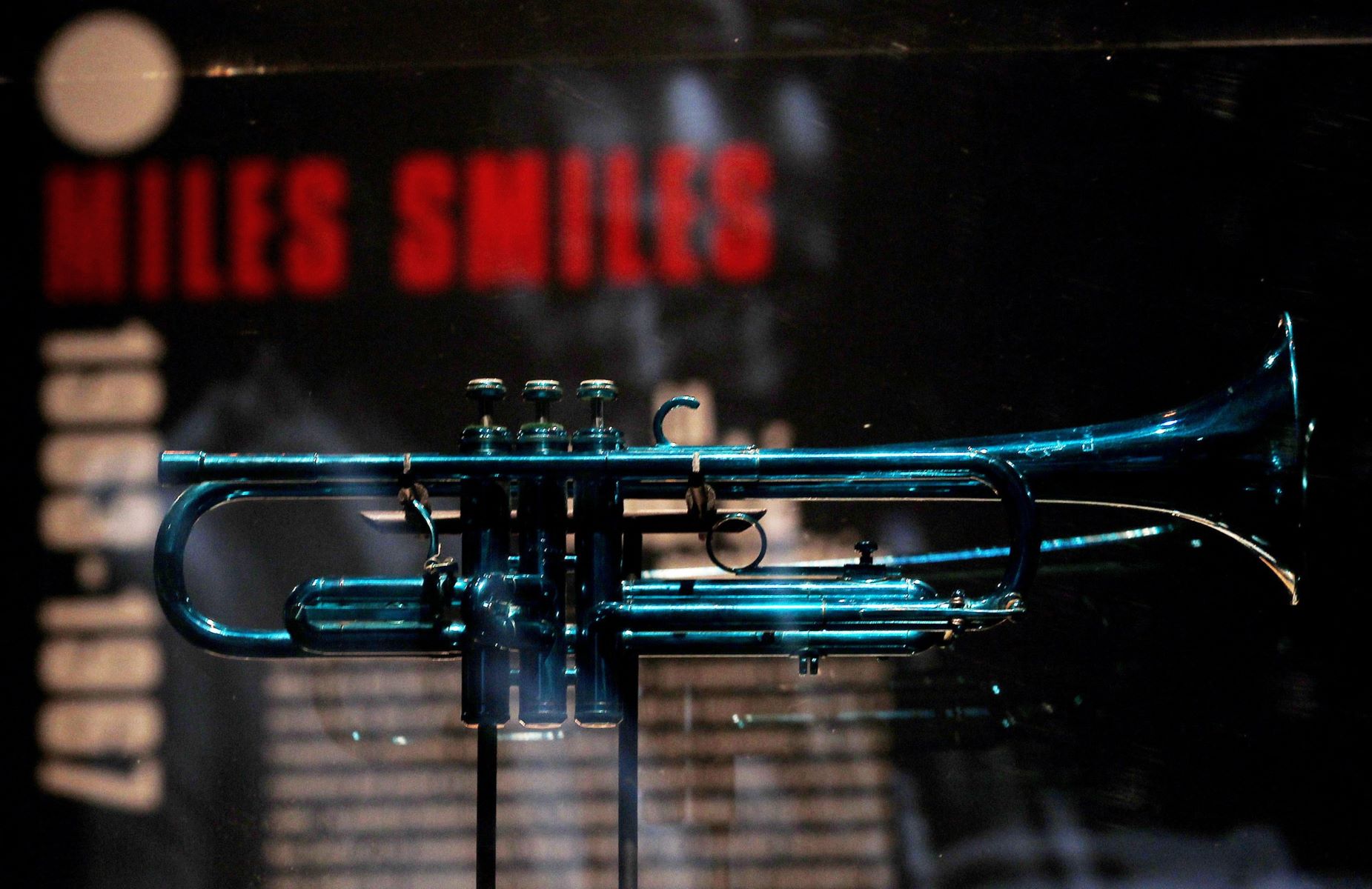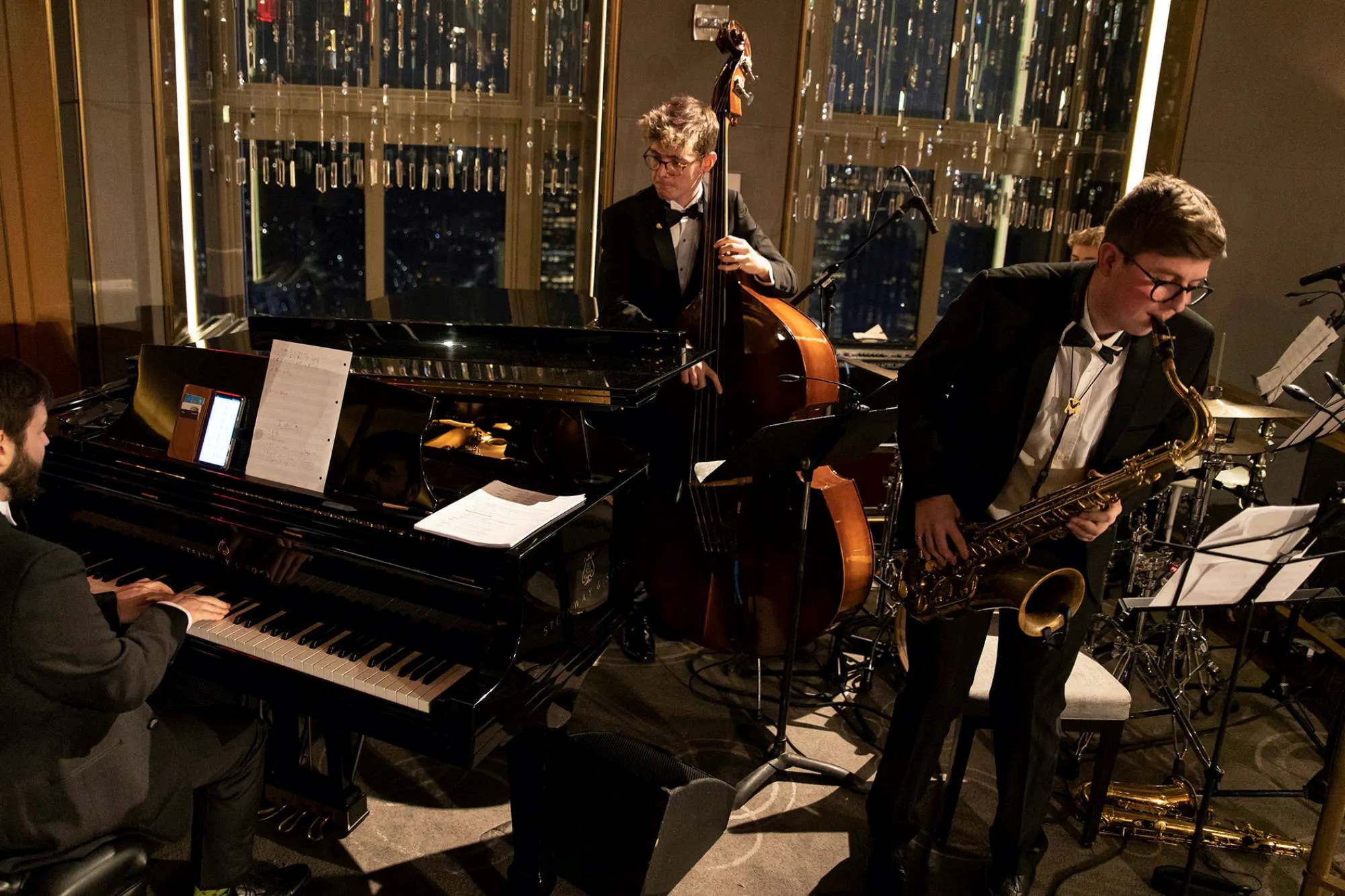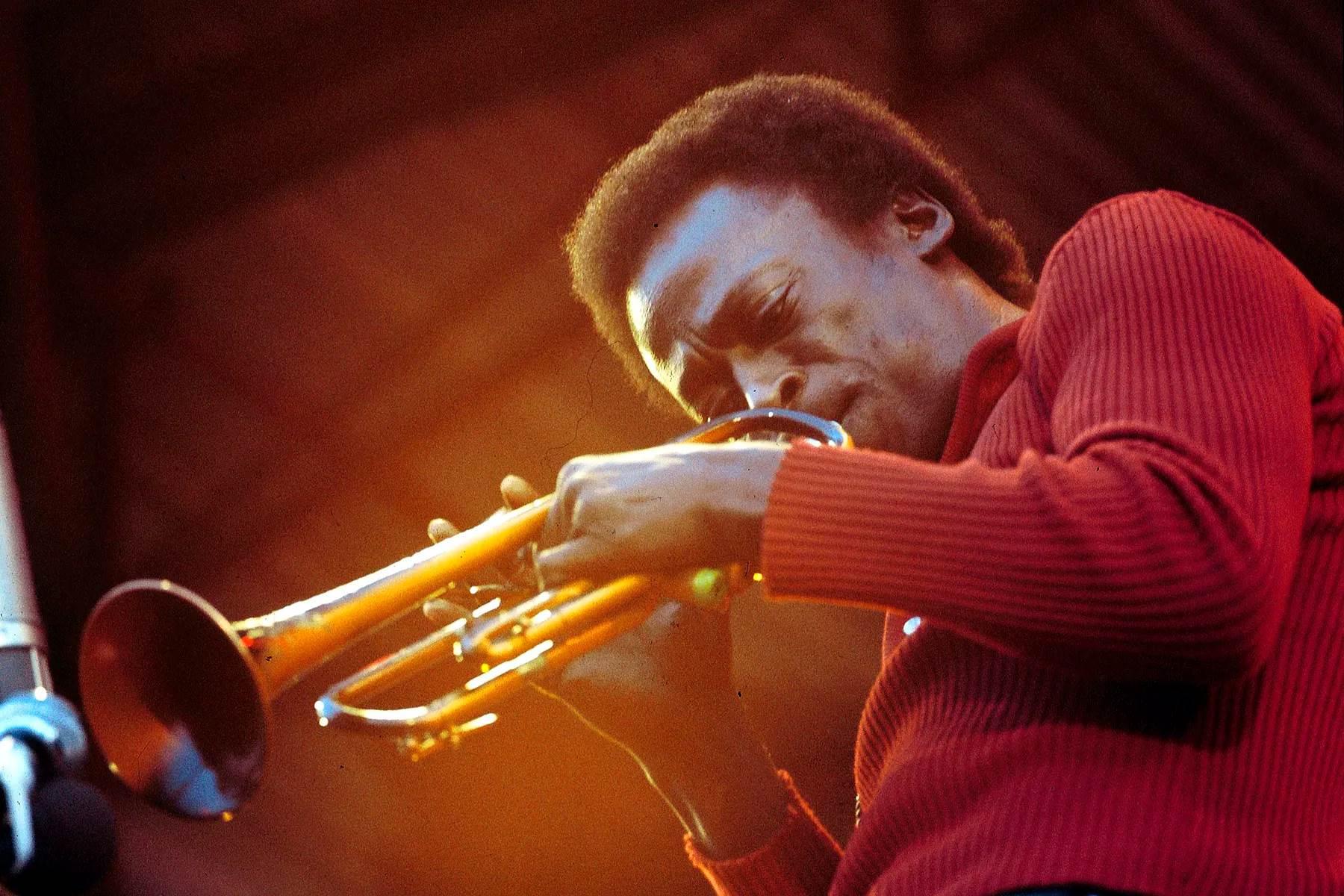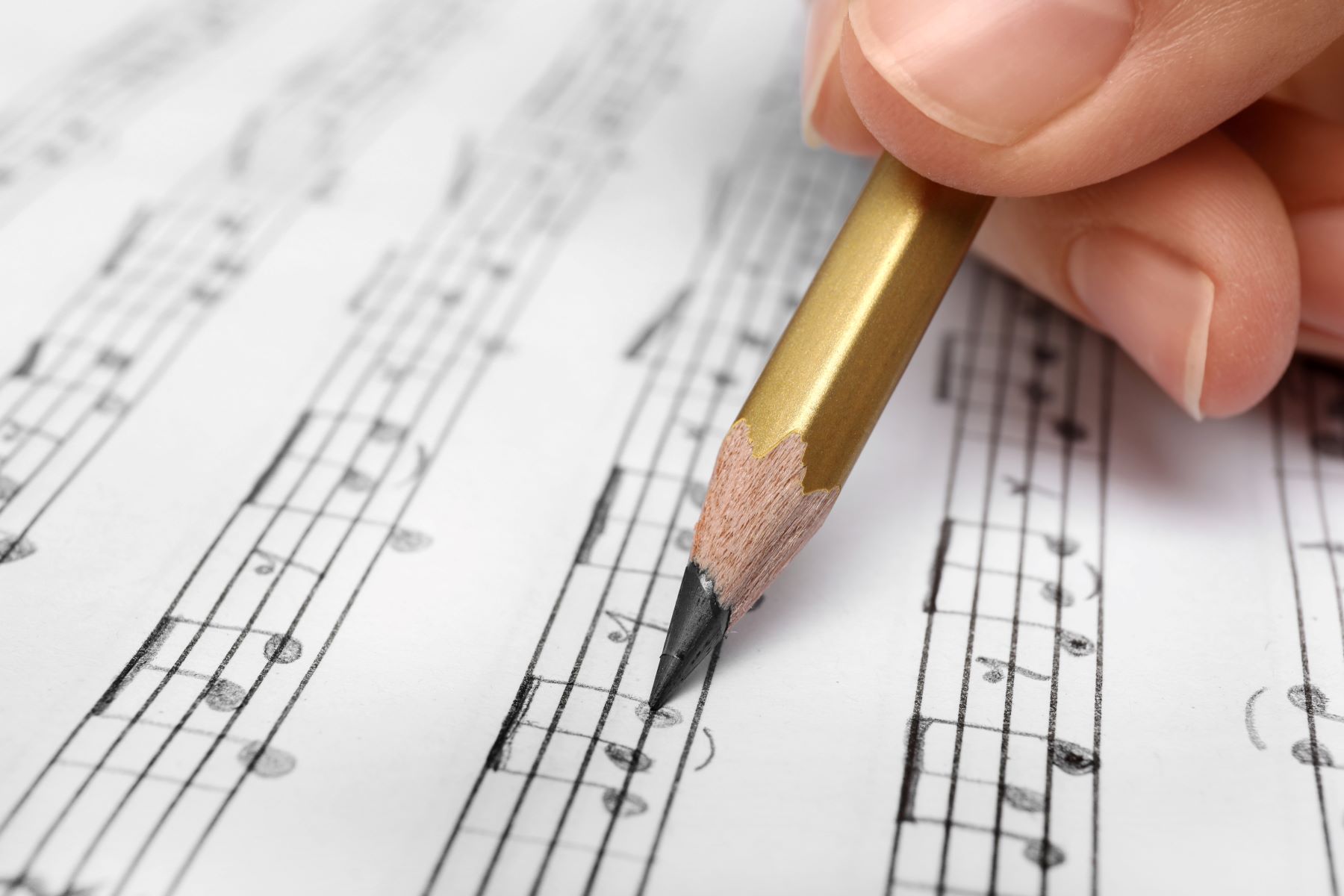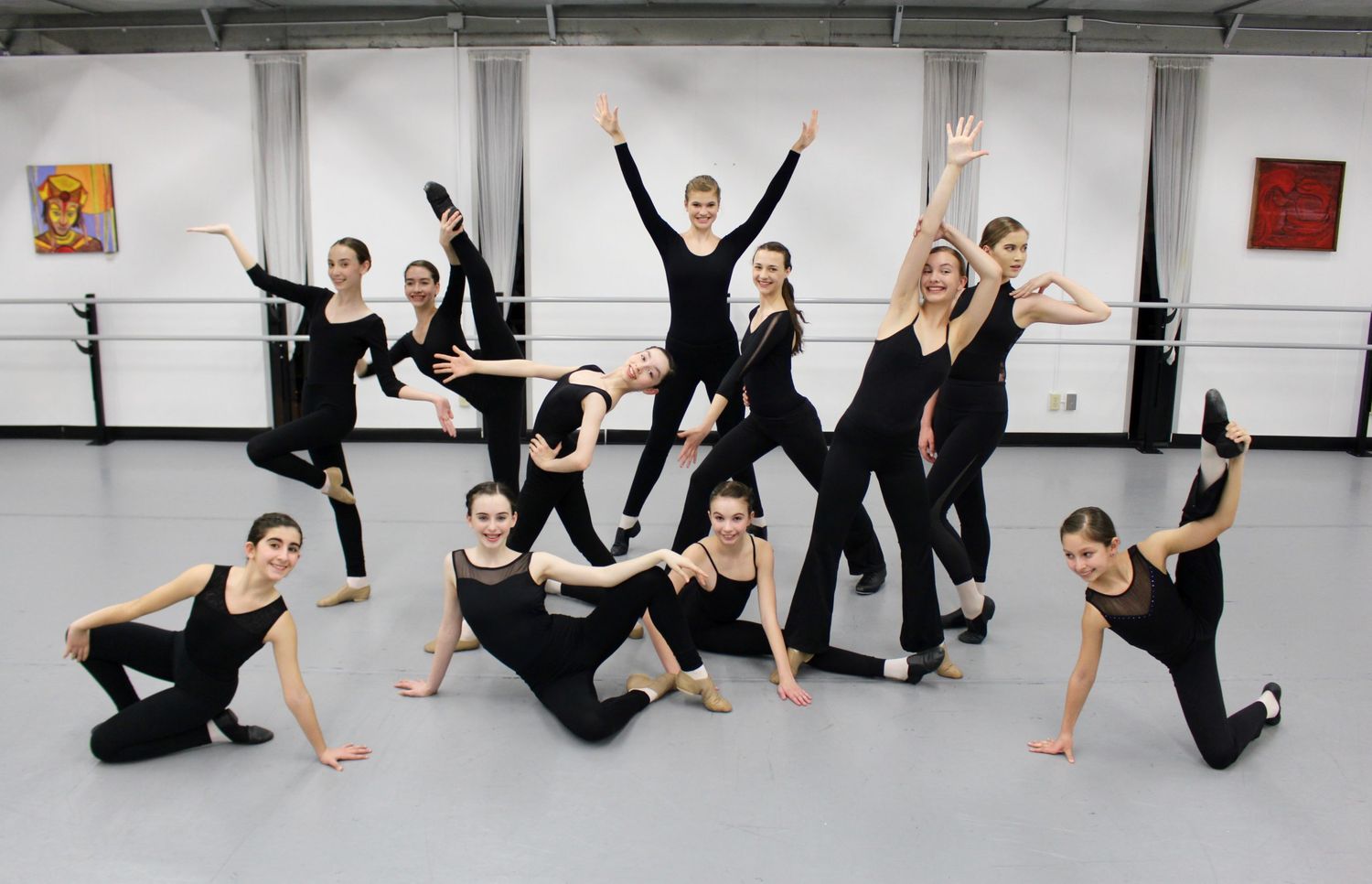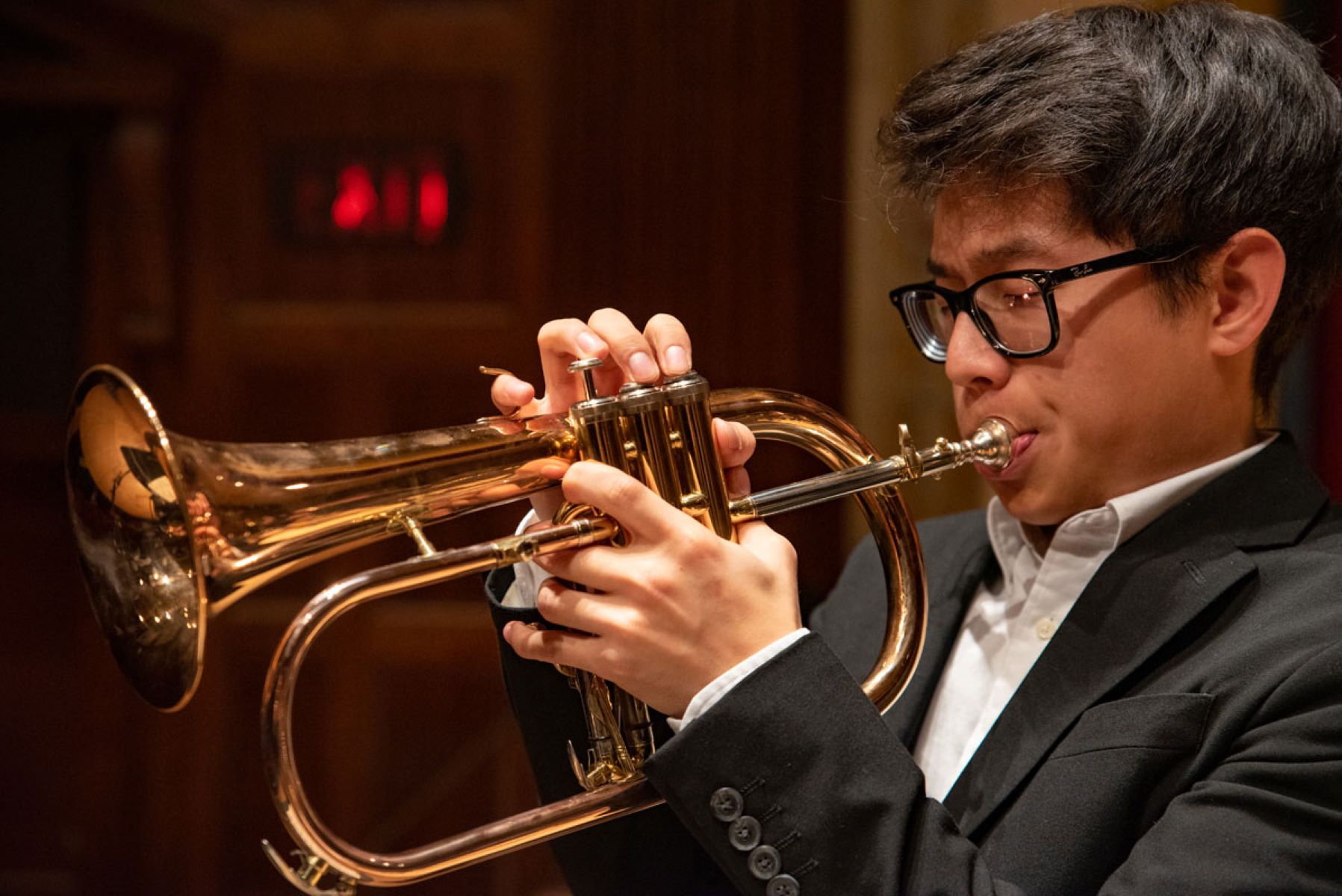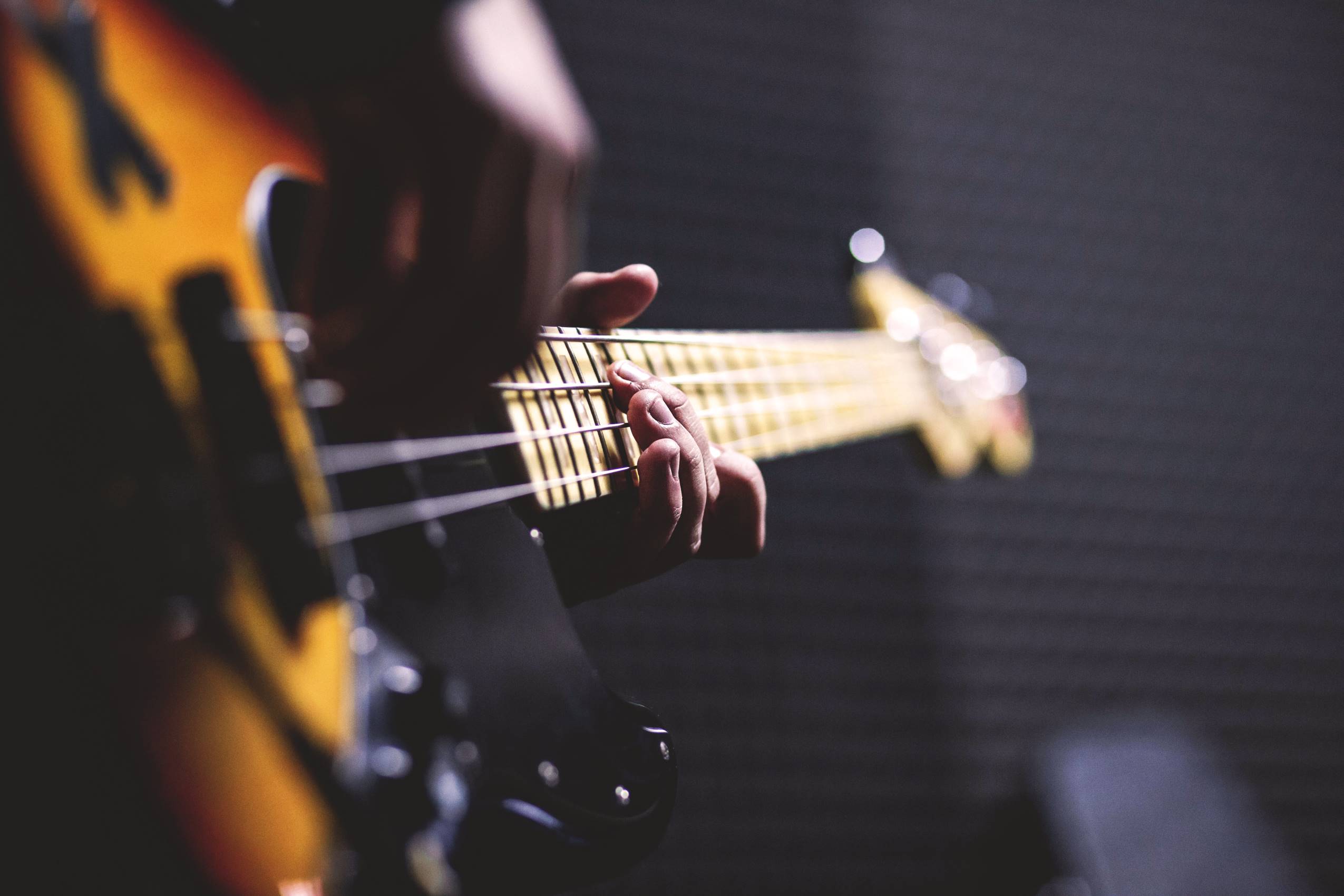

Jazz
How To Improvise In Jazz
Modified: January 29, 2024
Learn how to improvise in jazz and enhance your musical skills with this comprehensive guide. Unlock the secrets of jazz improvisation and take your playing to the next level.
(Many of the links in this article redirect to a specific reviewed product. Your purchase of these products through affiliate links helps to generate commission for AudioLover.com, at no extra cost. Learn more)
Table of Contents
- Introduction
- Understanding Jazz Improvisation
- Essential Concepts for Jazz Improvisation
- Familiarizing Yourself with Jazz Harmony
- Developing Your Improvisational Vocabulary
- Exploring Different Scales and Modes
- Internalizing Rhythmic Patterns and Phrasing
- Listening and Transcribing Jazz Solos
- Practicing Jazz Improvisation Techniques
- Collaborating and Communicating in a Jazz Ensemble
- Conclusion
Introduction
Jazz music has a rich and vibrant history, known for its improvisational nature and expressive performances. Improvising in jazz is like having a conversation with your instrument, where the notes and melodies you play are spontaneous and unique to each performance. It is a skill that requires a deep understanding of jazz theory, harmony, and rhythm, combined with creativity and a willingness to take risks.
In this article, we will explore the art of jazz improvisation and provide you with essential concepts, techniques, and resources to develop your skills as a jazz improviser. Whether you are a beginner or an experienced musician looking to refine your improvisational abilities, this guide will provide you with valuable insights to help you navigate the exciting world of jazz improvisation.
Before we dive into the specifics of jazz improvisation, it is important to understand the foundation of jazz music itself. Born in the early 20th century in African American communities, jazz has evolved into a genre that encompasses a wide range of styles, from traditional swing to modern fusion. It is characterized by syncopated rhythms, intricate melodies, and complex harmony.
Jazz improvisation is the art of spontaneously creating melodies, harmonies, and rhythms within the framework of a song. It allows musicians to express their unique musical voice and interact with other musicians in a live setting. Improvisation is a key component of jazz, distinguishing it from other genres where the music is typically performed exactly as written.
Throughout the history of jazz, countless legendary musicians have made their mark through their improvisational prowess. From the virtuosic saxophone solos of Charlie Parker to the innovative piano improvisations of Thelonious Monk, jazz improvisation has been at the heart of the genre’s evolution.
Whether you play a melodic instrument like the saxophone, trumpet, or guitar, or a rhythm instrument like the piano or drums, learning to improvise in jazz opens up a world of possibilities for musical expression. It allows you to add your personal touch to standard jazz repertoire, create your own compositions, and engage in spontaneous musical conversations with other musicians.
As we embark on this journey into jazz improvisation, remember that the goal is not to become an exact replica of the jazz greats that came before you. Instead, strive to develop your own unique voice and style as an improviser. Jazz is a living art form, and each individual has something unique to contribute.
So, let’s dive in and explore the world of jazz improvisation. Get ready to unlock your creativity, express yourself through your instrument, and join the lineage of jazz musicians who have shaped this incredible genre.
Understanding Jazz Improvisation
Jazz improvisation is a skill that combines technical proficiency, musical knowledge, and artistic expression. It allows musicians to create spontaneous melodies, harmonies, and rhythms within the structure of a song. Understanding the key elements of jazz improvisation is essential for any musician looking to explore this exciting aspect of the genre.
One of the fundamental aspects of jazz improvisation is the ability to navigate through chord changes. Jazz songs are typically built on a series of chord progressions, and improvisers must understand how to play melodic lines that fit harmonically with each chord in the progression. This requires a strong understanding of music theory and the ability to quickly identify the appropriate scales, arpeggios, and chord tones to use over each chord.
Rhythmic awareness is also crucial in jazz improvisation. Jazz music is known for its syncopated rhythms and complex time signatures. Improvisers must be able to play with a strong sense of groove and navigate through intricate rhythmic patterns. This involves developing a solid understanding of swing feel, syncopation, and rhythmic subdivisions.
Listening skills play a vital role in jazz improvisation. By listening to recordings of jazz masters, aspiring improvisers can study their phrasing, melodic choices, and overall approach to improvisation. Transcribing solos by ear is an excellent way to internalize their vocabulary and incorporate it into your own playing.
Another element to consider is the use of dynamics and articulation. Jazz improvisation is not just about playing the correct notes but also about expressing the music with nuance and emotion. Knowing when to play softly, when to play with a strong attack, and how to vary your articulation adds depth and personality to your improvisations.
Furthermore, jazz improvisation is inherently interactive. In a live performance or a jam session, improvisers need to communicate with and respond to other musicians. This requires the ability to listen and react in real-time, creating musical conversations and building upon each other’s ideas. Collaboration and spontaneity are essential in this aspect of jazz improvisation.
As you dive deeper into jazz improvisation, it’s important to keep in mind that it is a continuous learning process. It takes time, practice, and dedication to develop your skills and find your unique voice. Embrace the challenges and enjoy the journey of exploring the vast landscape of jazz improvisation.
In the next sections, we will delve deeper into the essential concepts, techniques, and resources that will help you develop your jazz improvisation abilities. Get ready to unlock your creativity, expand your musical vocabulary, and take your improvisation skills to new heights.
Essential Concepts for Jazz Improvisation
When it comes to jazz improvisation, there are several essential concepts that every aspiring improviser should understand. These concepts serve as the foundation for creating meaningful and expressive improvisations in the jazz genre.
The first concept to grasp is the importance of chord progressions. Jazz songs are typically built upon a series of chord changes, and improvisers need to navigate through these changes with fluency. It is crucial to understand the harmonic context of the song and the relationship between the chords. This knowledge allows improvisers to choose appropriate scales, arpeggios, and chord tones to outline the harmony accurately.
Understanding jazz scales is another integral aspect of improvisation. Although there are countless scales to explore in jazz, a few are commonly used as and provide a solid foundation for improvising. The most fundamental of these is the major scale, which serves as the basis for constructing other scales and modes. Other important scales include the melodic minor, harmonic minor, and various modes such as Dorian, Mixolydian, and Locrian. By familiarizing yourself with these scales, you equip yourself with a versatile set of tools for melodic improvisation.
Rhythm is a defining characteristic of jazz, and having a strong sense of rhythm is essential for jazz improvisation. Understanding swing feel, syncopation, and rhythmic subdivisions is crucial. By internalizing the subtle nuances of jazz rhythm, improvisers can create compelling rhythmic patterns, interact with other musicians, and maintain a solid groove within the improvisation.
Another essential concept in jazz improvisation is the use of motifs. A motif is a short melodic or rhythmic idea that serves as a building block for improvisation. By developing motifs and incorporating them throughout your solos, you create continuity and engage the listener. Motifs can be transformed, varied, and developed as the improvisation progresses, adding depth and interest to your playing.
Lastly, dynamics and expression play a significant role in jazz improvisation. Varying your dynamics by playing softly or loudly, emphasizing certain notes or phrases, and using techniques like vibrato and bends, adds nuance and emotion to your improvisations. It allows you to convey your musical ideas with clarity and impact.
By understanding these essential concepts and incorporating them into your practice routine, you will lay a solid foundation for your jazz improvisation skills. As you continue to explore the world of jazz improvisation, remember that it’s not just about playing the right notes or following a set of rules. It’s about expressing your unique musical voice, engaging in musical conversations, and ultimately, creating an emotional connection with the listener.
Now that we have covered the essential concepts, let’s move on to the next section, where we will delve deeper into the world of jazz harmony and how it relates to improvisation.
Familiarizing Yourself with Jazz Harmony
Understanding jazz harmony is essential for any aspiring jazz improviser. Jazz songs are built upon complex harmonic structures, and having a solid grasp of the underlying harmony will enable you to make informed melodic choices during your improvisations.
One of the foundational elements of jazz harmony is the use of chord progressions. Jazz songs often follow a specific chord progression, such as the classic ii-V-I progression. This progression consists of a minor 7th chord (ii), a dominant 7th chord (V), and a major 7th chord (I) in a defined key. By familiarizing yourself with common jazz progressions, you will be better equipped to navigate through the harmonic landscape during your improvisations.
It’s also essential to have a strong knowledge of jazz chords. In addition to the basic major and minor chords, jazz incorporates more complex chord types such as extended chords (7th, 9th, 11th, and 13th chords), altered chords (b9, #9, b5, #5), and chord substitutions. Understanding how to construct and voice these chords on your instrument will give you a deeper understanding of jazz harmony and provide you with more options for improvisation.
Another crucial aspect of jazz harmony is the concept of chord-scale relationships. Each chord in a progression has associated scales that work well for improvising over it. For example, a major 7th chord can be paired with the Ionian mode (major scale), while a dominant 7th chord can be paired with the Mixolydian mode. Learning these relationships will help you choose appropriate scales and melodic material when improvising over different chords.
Modal interchange is another concept to explore in jazz harmony. Modal interchange occurs when chords from different modes or keys are used within a single progression. This adds color and tension to the harmony, providing interesting opportunities for improvisation. By familiarizing yourself with modal interchange, you can add depth and complexity to your improvisations.
Furthermore, understanding harmonic analysis is crucial for jazz improvisation. Harmonic analysis involves analyzing the chord progressions of a song and identifying the function and relationship of each chord within the key. This analysis helps you make more informed melodic choices by highlighting the underlying structure of the song.
Listening to and studying recordings of jazz standards is an excellent way to familiarize yourself with jazz harmony. By transcribing solos and analyzing the chords and progressions used in these recordings, you can observe how experienced improvisers navigate through the harmony and incorporate their melodic ideas.
Incorporating jazz harmony into your practice routine is essential for developing your improvisation skills. Spend time exploring different chord progressions, learning new voicings and inversions of jazz chords, and experimenting with scales and melodic ideas over various chord types. The more you immerse yourself in jazz harmony, the more comfortable and confident you will become when improvising.
Now that you have a better understanding of jazz harmony, let’s continue our journey by exploring techniques for developing your improvisational vocabulary.
Developing Your Improvisational Vocabulary
Building a strong improvisational vocabulary is a crucial aspect of becoming a proficient jazz improviser. Just like learning a new language, developing your musical vocabulary allows you to express yourself more fluently and creatively within the context of jazz improvisation.
One of the most effective ways to expand your improvisational vocabulary is through transcribing solos by jazz masters. Transcribing involves learning and analyzing recorded solos note by note. By transcribing solos, you expose yourself to the musical language of experienced improvisers and internalize their melodic and rhythmic ideas. This process helps you develop a deeper understanding of jazz phrasing, articulation, and stylistic nuances.
While transcribing solos, pay attention to the rhythmic patterns and motifs used by the improvisers. These small musical ideas act as building blocks for creating longer melodic lines. By absorbing and incorporating these motifs into your own playing, you can develop a library of musical phrases and ideas to draw from during improvisation.
Studying jazz standards is another effective way to develop your improvisational vocabulary. Jazz standards are well-known songs that are frequently performed in the jazz repertoire. By learning the melodies, chord progressions, and possible melodic variations for these standards, you expose yourself to the common language and structures of jazz improvisation.
Alongside transcribing solos and studying jazz standards, it is essential to practice improvising over backing tracks or with a rhythm section. Set aside dedicated time to experiment with the scales, modes, and chord tones that are applicable to the specific song or progression you’re working on. As you become more comfortable, try to incorporate the musical vocabulary you’ve gathered during your transcriptions and studies.
Additionally, technical exercises can help expand your improvisational vocabulary. Practicing scales, arpeggios, and patterns in different keys and variations will improve your technical proficiency and give you a wider range of melodic options to choose from when improvising.
Listening to a diverse range of jazz recordings is a valuable source of inspiration. Explore different eras, styles, and sub-genres of jazz to expose yourself to a variety of improvisational approaches. By listening, you can absorb the language and feel of jazz music, which will influence your own improvisational style.
Remember that developing your improvisational vocabulary is an ongoing process. The more you immerse yourself in the music, transcribe solos, study jazz standards, and practice improvising, the more diverse and fluent your vocabulary will become.
Ultimately, the goal is to internalize and personalize the musical vocabulary you’ve gathered, making it an integral part of your own musical voice. With time and dedication, you will gain the confidence to express yourself authentically and creatively in the world of jazz improvisation.
Now that we’ve discussed developing your improvisational vocabulary, let’s explore the world of scales and modes and how they can enhance your improvisation skills.
Exploring Different Scales and Modes
When it comes to jazz improvisation, having a solid understanding of scales and modes is crucial. Scales and modes provide a framework for improvising over different chords and chord progressions, adding depth and variety to your melodic lines.
One of the most commonly used scales in jazz improvisation is the major scale. The major scale serves as the foundation for many other scales and modes and provides a melodic framework for improvisation. By knowing the major scale in various keys and positions on your instrument, you can confidently navigate through different tonalities and chord progressions.
Another important scale to explore is the melodic minor scale. The melodic minor scale has a minor quality in the lower register but switches to a major quality in the upper register. It offers a unique and colorful sound, particularly when used over certain chords, such as minor-major seventh chords or dominant chords with alterations.
Modes are another vital aspect of jazz improvisation. Modes are scales derived from the major scale, each starting on a different note of the scale. The most commonly used modes in jazz include the Ionian mode (major scale), Dorian mode (minor scale with a raised 6th), Mixolydian mode (major scale with a lowered 7th), and Lydian mode (major scale with a raised 4th).
Exploring modes allows you to add different tonal colors and flavors to your improvisation. By understanding the characteristics of each mode and the chords they can be used over, you can choose the most appropriate mode to create the desired mood or tension in your solos.
Alongside the major scale and modes, it is important to explore other scales that are commonly used in jazz improvisation, such as the pentatonic scale, blues scale, and diminished scale. The pentatonic scale provides a simple and versatile structure that can be used over a variety of chords, while the blues scale adds a soulful, bluesy flavor to your improvisation. The diminished scale is often used over dominant seventh chords with a b9 or #9 alteration, creating tension and dissonance.
When practicing scales and modes, it’s important to do more than just play them up and down. Experiment with different rhythmic patterns, articulations, and melodic variations to develop your own musical ideas. Explore different intervals, such as skips and leaps, to create interesting melodic contours within your improvisation.
Remember that scales and modes are tools to enhance your improvisation, but they are not the sole focus of your playing. Ultimately, you want to develop a strong melodic sense and connect emotionally with your audience. Incorporate your knowledge of scales and modes into your improvisation, but also rely on your ear, musical intuition, and personal expression to create meaningful and captivating solos.
In the next section, we will discuss the importance of internalizing rhythmic patterns and phrasing to further develop your jazz improvisation skills.
Internalizing Rhythmic Patterns and Phrasing
Rhythm is a fundamental component of jazz music, and developing a strong sense of rhythm is essential for jazz improvisers. Internalizing rhythmic patterns and mastering phrasing allows you to create dynamic and engaging solos that groove with the music.
One of the first steps in internalizing rhythmic patterns is to develop a solid understanding of swing feel. Swing feel is the rhythmic style that characterizes jazz music, featuring a syncopated and uneven rhythm. It’s crucial to listen to jazz recordings and study how the musicians phrase their lines. By playing with a swing feel, you can bring a distinctive rhythmic quality to your improvisations.
Another exercise to internalize rhythmic patterns is to practice various rhythmic subdivisions. Start by focusing on basic subdivisions such as quarter notes, eighth notes, and sixteenth notes. Once you are comfortable with these subdivisions, challenge yourself with complex rhythms, syncopation, and offbeat accents. By practicing these rhythmic patterns, you will develop a strong internal sense of time and rhythmic creativity.
Phrasing is another critical aspect of jazz improvisation. Phrasing refers to how you structure and shape your musical ideas. It’s similar to creating meaningful sentences in a conversation, where you alternate between statements, questions, and pauses. In jazz, phrasing involves using rests, varying the length of your lines, and punctuating your phrases with strong accents or melodic tags. By developing a strong sense of phrasing, you can create expressive and engaging solos.
Listening to jazz recordings is an invaluable way to internalize rhythmic patterns and study different approaches to phrasing. Pay attention to the rhythmic ideas used by seasoned jazz musicians and how they shape their lines. Transcribing solos by ear is also a great way to practice internalizing rhythmic patterns and phrasing. By capturing the subtleties of the original recording, you can incorporate these rhythmic ideas into your own playing.
Practicing with a metronome or backing tracks is beneficial for developing your rhythmic accuracy and timing. Start with slower tempos, gradually increasing the speed as you become more comfortable. This will allow you to internalize different rhythmic patterns and develop a strong sense of groove.
Experimenting with rhythmic displacement is another way to expand your rhythmic vocabulary. Try playing common melodic lines or motifs starting on different parts of the beat or shifting the accents within a phrase. This technique adds complexity and interest to your improvisations, keeping the audience engaged.
Remember that rhythm and phrasing go hand in hand with melodic ideas. As you practice, strive for a balance between creating interesting rhythms and maintaining a strong melodic and harmonic connection. A well-phrased solo will be musically meaningful and coherent, capturing the essence of the jazz language.
By internalizing rhythmic patterns and developing a strong sense of phrasing, you will elevate your jazz improvisations to new heights. Your solos will groove, captivate the audience, and add a unique rhythmic flair to your performances.
In the next section, we will discuss the importance of listening and transcribing jazz solos as a means to further enhance your jazz improvisation skills.
Listening and Transcribing Jazz Solos
Listening to and transcribing jazz solos is a fundamental practice for any aspiring jazz improviser. It is through careful study and analysis of the performances of jazz masters that you can absorb their language and develop your own improvisational style.
When it comes to listening to jazz, immerse yourself in a wide variety of recordings from different eras and styles. Explore the works of jazz legends such as Charlie Parker, Miles Davis, John Coltrane, and Ella Fitzgerald, as well as contemporary jazz artists. Pay close attention to their phrasing, tone, articulation, dynamics, and overall approach to improvisation. By studying their recordings, you can gain valuable insights into the nuances and subtleties of jazz improvisation.
Transcribing solos involves learning and analyzing jazz improvisations note by note. Start with simple phrases and gradually work your way towards more complex solos. While transcribing, focus not only on the pitches but also on the rhythmic patterns, articulations, and the musical choices made by the soloist. This process helps to internalize the language of jazz and allows you to incorporate these musical ideas into your own playing.
Transcribing solos by ear is a challenging but immensely rewarding process. It helps train your ear and develops your musical memory. Often, transcribing solos is a gradual process that requires patience and persistence. Don’t be discouraged by the difficulty in the beginning. Take your time, listen attentively, and break down the solos into smaller sections to make the process more manageable.
In addition to transcribing the solos of instrumentalists, consider transcribing the improvised vocal lines of jazz singers. Singers like Ella Fitzgerald, Billie Holiday, and Sarah Vaughan are renowned for their incredible improvisational abilities. Transcribing their solos is an excellent way to study melodic phrasing, storytelling, and expression in jazz improvisation.
Transcribing is not only about replicating existing solos but also about understanding and incorporating the musical vocabulary and concepts present in the recordings into your own playing. As you transcribe more solos, you’ll begin to recognize recurring phrases, motifs, and harmonic patterns that are common in jazz improvisation. This newfound vocabulary will gradually become a part of your own improvisational arsenal.
Listening and transcribing jazz solos is an ongoing practice. Continuously seek out new recordings to explore, challenge yourself with increasingly complex solos, and use the knowledge you gain from transcribing to inform and inspire your own improvisations. Over time, you’ll develop a deeper understanding of jazz language and develop a unique voice as an improviser.
Remember, the goal of transcribing is not to become a carbon copy of the jazz greats who came before you, but to study, internalize, and incorporate their musical ideas into your playing. Use their solos as a jumping-off point for your own creative expression and exploration.
Now that we have discussed the importance of listening and transcribing jazz solos, let’s move on to the next section, where we will explore various techniques for practicing jazz improvisation to further enhance your skills.
Practicing Jazz Improvisation Techniques
Practicing jazz improvisation techniques is essential for honing your skills and becoming a confident and versatile improviser. It is through deliberate practice that you can develop your creativity, technical proficiency, and overall musicianship. Here are some effective techniques to incorporate into your practice routine:
1. Scales and arpeggios: Dedicate time to practicing scales and arpeggios in different keys and positions on your instrument. This will improve your technical facility and help you navigate through different chord progressions with ease.
2. Chord progressions: Practice improvising over common jazz chord progressions, such as ii-V-I, blues progressions, and rhythm changes. Use scales, arpeggios, and chord tones to outline the harmony and experiment with different melodic ideas.
3. Transcribing: Continuously transcribe solos by ear, as discussed earlier. This exercise trains your ear, improves your musical memory, and allows you to absorb the language and nuances of jazz improvisation.
4. Rhythmic exercises: Work on various rhythmic exercises, such as playing along with a metronome or drum tracks in different time signatures. Develop your sense of groove, explore rhythmic phrasing, and experiment with different accents and subdivisions.
5. Call and response: Practice call and response exercises by playing short musical phrases and then responding to them with contrasting or related ideas. This technique helps develop your ability to listen and react in real-time, an important skill for improvising with other musicians.
6. Guide tones: Focus on playing and resolving guide tones – the third and seventh – over different chord progressions. This technique helps you connect melodic lines and emphasizes the essential harmony of the chords.
7. Intervallic exercises: Experiment with intervallic patterns, such as playing in thirds, fourths, or fifths. This technique adds variety and interest to your improvisations and helps you break away from predictable scalar lines.
8. Visualization: Spend time visualizing the fingerings and patterns on your instrument without physically playing them. This mental practice helps solidify your knowledge of scales, arpeggios, and melodic ideas, enhancing your improvisation skills.
9. Jam sessions and ensemble playing: Actively seek opportunities to participate in jam sessions or play with other musicians. This experience allows you to apply your improvisation skills in a real-time setting, interact with other musicians, and adapt to different musical contexts.
10. Record and evaluate: Record your improvisations during practice sessions or jam sessions. Listen back to them critically, identifying areas for improvement and areas where your strengths lie. This self-evaluation allows you to reflect on your progress and set goals for future practice sessions.
Remember to maintain a consistent practice routine and approach your practice sessions with focus and intention. Strive for a balance between technical exercises and creative exploration. Embrace challenges and push yourself to step out of your comfort zone. Consistent and dedicated practice will help you grow as a jazz improviser and unleash your true musical potential.
In the final section, we will discuss the importance of collaboration and communication in a jazz ensemble, and how these skills can elevate your improvisation abilities.
Collaborating and Communicating in a Jazz Ensemble
Jazz is an inherently collaborative art form, and developing strong collaboration and communication skills is essential for being an effective jazz improviser. In a jazz ensemble, the ability to interact, listen, and communicate with other musicians is essential for creating cohesive and engaging performances. Here are some key aspects to consider:
1. Active listening: Actively listen to the other musicians in the ensemble. Pay attention to their melodic and rhythmic ideas, and respond accordingly in your improvisation. This creates a musical conversation and allows for spontaneous interactions on stage.
2. Supporting roles: Understand your role in the ensemble and be willing to support and complement the other musicians. This may involve playing supporting rhythmic figures, providing harmonic support, or laying down a solid groove. Balancing individual expression with ensemble cohesion is crucial for a successful performance.
3. Non-verbal communication: Communicate with other musicians through eye contact, nods, and other non-verbal cues. This helps to indicate when to start or end a solo, signal transitions, or communicate musical ideas in the moment. Non-verbal communication enhances the connection and synchronicity among the members of the ensemble.
4. Taking turns: Respect the space and opportunities for each musician to solo and shine. Avoid dominating the improvisation and allow for equal participation from your fellow musicians. This promotes a balanced and inclusive ensemble dynamic.
5. Responsiveness: Be responsive to the musical ideas and choices of the other musicians. Listen for cues and signals that indicate changes in the improvisation, such as key modulations or shifts in dynamics. Adjust your playing accordingly to create a cohesive and unified musical performance.
6. Empathy: Cultivate empathy towards your fellow musicians. Understand and appreciate their musical style, strengths, and ideas. This fosters a supportive and collaborative environment, nurturing creativity and allowing for musical exploration.
7. Adaptability: Be adaptable and flexible in your improvisation. Jazz music often involves spontaneous changes and improvisational challenges. Embrace these opportunities and be prepared to adjust your playing to accommodate and enhance the overall musical experience.
8. Rehearsals and communication: Engage in productive rehearsals where ideas can be discussed and shared. Provide constructive feedback to your fellow musicians, and be open to receiving feedback as well. Effective communication during rehearsals allows for collective growth and refinement of the ensemble’s performance.
9. Musical empathy: Develop a deep understanding of the structure and arrangement of the songs you perform. This enables you to anticipate and support the musical intentions of your fellow musicians. Show appreciation for their solos or musical contributions, creating a positive and collaborative atmosphere.
10. Mutual trust: Building trust within the ensemble is essential. Trust that each musician has the necessary skills and creativity to contribute to the improvisation. This trust creates a safe space for taking risks, exploring new ideas, and collectively pushing the boundaries of the music.
By embracing collaboration and effective communication within a jazz ensemble, you can elevate your improvisation abilities. The power of collective creativity and collective listening allows for transformative musical experiences, creating performances that are greater than the sum of their parts.
With these insights, you are well-equipped to embark on your journey as a jazz improviser. Embrace the rich history and traditions of jazz while exploring your own unique musical voice. Remember to consistently practice, engage with fellow musicians, and always strive for growth and musical expression in your improvisations.
Conclusion
Congratulations! You have now journeyed through the exploration of jazz improvisation, gaining valuable insights into its artistry, techniques, and importance. Jazz improvisation is a dynamic and expressive form of musical communication, requiring a combination of technical proficiency, theoretical knowledge, and creative intuition.
Throughout this article, we have touched upon essential concepts for jazz improvisation, such as understanding jazz harmony, developing improvisational vocabulary, exploring scales and modes, internalizing rhythmic patterns and phrasing, and the significance of listening and transcribing jazz solos. We have also discussed practicing jazz improvisation techniques and the collaborative nature of jazz ensemble performance.
As you continue on your jazz improvisation journey, remember that there is no one right way to improvise. Embrace the freedom and creativity that jazz offers, while also grounding yourself in the rich tradition and language of the genre. The true beauty of jazz lies in the balance between individual expression and collective collaboration.
Make time for deliberate practice, transcribing solos, studying jazz standards, and honing your technical skills. Surround yourself with jazz recordings and performances, absorbing the language and nuances of the masters. Engage in collaborations with fellow musicians, actively listening and communicating to create musical conversations that inspire and captivate audiences.
Throughout this process, remember that jazz is a journey, not a destination. It is a constant exploration of musical ideas, an ongoing quest to deepen your understanding and mastery of the genre. Embrace the challenges and enjoy the moments of musical discovery.
As you embark on your jazz improvisation journey, may you find joy in expressing yourself through your instrument, challenging yourself to push the boundaries of your creativity, and experiencing the soul-stirring magic of jazz music. Let your improvisations be a testament to your unique musical voice, contributing to the rich tapestry of jazz and carrying the legacy of this extraordinary art form forward.
Now, go forth with confidence and immerse yourself in the joy of jazz improvisation. The world awaits your musical voice!


